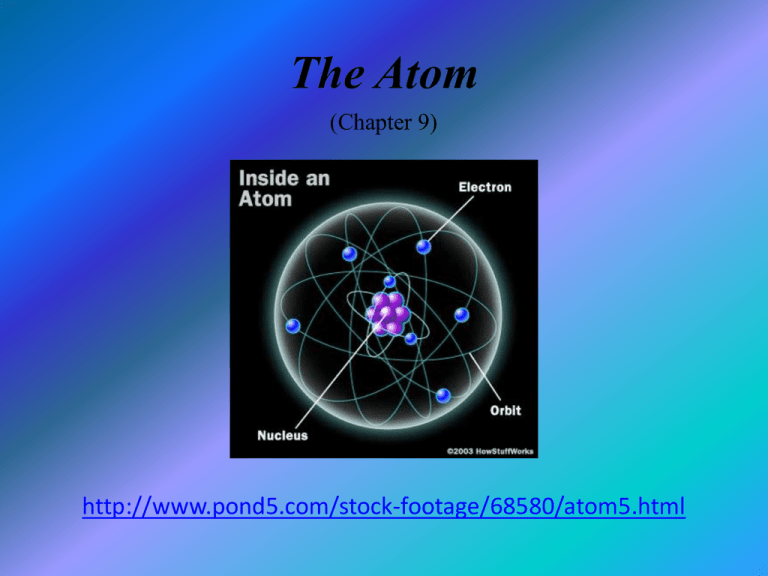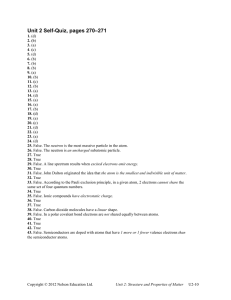Chapter 9: The Atom
advertisement

The Atom (Chapter 9) http://www.pond5.com/stock-footage/68580/atom5.html Student Learning Objectives • Recall the defining properties of an atom • Apply the dual nature of light to atoms • Analyze the quantum nature of the atom What are the defining properties of regular atoms? Regular, neutral atoms have an equal number of electrons, protons, and neutrons. What makes each atom unique is the number of protons. Practice 1) Where is most of the mass in an atom? 2) What contributes most to the size of an atom? 3) What is an ion? What is an isotope? More Practice 4) What prevents the atoms of one object from passing through the atoms of another object? 5) Imagine a world with elements classified according to numbers of electrons. What is meant by the dual nature of light? Quantum theory predicts that objects emit individual packets of energy (photons). Sometimes light behaves as a wave (wavelengths) and sometimes light behaves as a particle (photons). Wave-Particle Duality Wave properties occur under conditions of reflection, refraction, and interference. Particle properties are exhibited under conditions of emission or absorption of light. de Broglie Wavelengths All subatomic particles exhibit wave-particle duality. Standing waves are set up by the motions of electrons. lDB = h mv . How do atoms emit and absorb light? Each atom has its own unique pattern of allowed orbits, based on the number of protons. When electrons change orbits, light is emitted or absorbed. Orbiting Electrons The farther an electron is from the nucleus, the higher its energy level. Ground State: electrons occupy lowest energy levels Excited State: electrons in added energy levels (infinite) Each type of atom emits its own specific pattern of photons. Atomic Spectrum http://astro.u-strasbg.fr/~koppen/discharge/ http://hyperphysics.phy-astr.gsu.edu/HBASE/quantum/atspect.html Hydrogen Photon Energy Each photon has a particular energy, based on the quantum jump. E(ni) – E(nf) = E(photon) Each color of light has a particular energy. E = hc l E = hn Practice 1) What is the energy of a photon that results from the 4 2 transition in the hydrogen atom? 2) What is this energy in Joules? Hydrogen Orbit eV n=1 8 n=2 15 n=3 30 n=4 80 More Practice 3) What is the energy of one yellow photon (l = 517 nm) from the Sun? How does this compare to the total energy output of the Sun?




